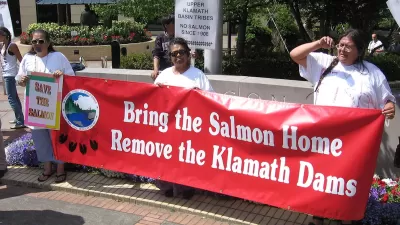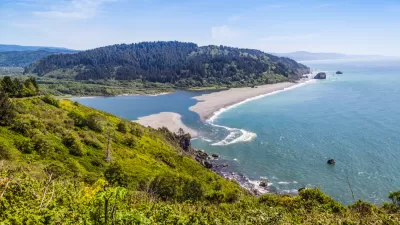A new biological opinion sets policy for the Federal Columbia River Power System until 2018. Critics say the new plan continues the unsuccessful status quo of habitat restoration—instead they want to spill water over four dams on the Snake River.
The National Oceanic and Atmospheric Administration recently released a court-mandated biological opinion for the operation of the Federal Columbia River Power System (FCRPS). The biological opinion follows the most recent version of the plan, adopted in 2008, and a subsequent biological opinion from 2010. The plan was struck down in court in 2011. The new biological opinion has renewed an ongoing controversy about the efficacy of habitat restoration in restoring the 13 species of Columbia River Basin salmon and steelhead listed for protection under the Endangered Species Act (ESA).
Critics of the most recent biological opinion, including environmental groups and the Nez Perce Tribe, cite the lack of improvement in salmon population as a sign that the traditional strategy of habitat restoration is not working. They would rather explore the breaching of four dams (i.e., increasing the water until it can spill over the tops of the dams) along the Snake River, which is a tributary of the Columbia River. Breaching, it’s hoped, would make passage along the river easier for endangered salmon and steelhead. But spilling water over the dam comes at the cost of the potential for that water to produce electricity.
FULL STORY: New Columbia River plan for protecting salmon and steelhead is little changed

Planetizen Federal Action Tracker
A weekly monitor of how Trump’s orders and actions are impacting planners and planning in America.

Chicago’s Ghost Rails
Just beneath the surface of the modern city lie the remnants of its expansive early 20th-century streetcar system.

San Antonio and Austin are Fusing Into one Massive Megaregion
The region spanning the two central Texas cities is growing fast, posing challenges for local infrastructure and water supplies.

Since Zion's Shuttles Went Electric “The Smog is Gone”
Visitors to Zion National Park can enjoy the canyon via the nation’s first fully electric park shuttle system.

Trump Distributing DOT Safety Funds at 1/10 Rate of Biden
Funds for Safe Streets and other transportation safety and equity programs are being held up by administrative reviews and conflicts with the Trump administration’s priorities.

German Cities Subsidize Taxis for Women Amid Wave of Violence
Free or low-cost taxi rides can help women navigate cities more safely, but critics say the programs don't address the root causes of violence against women.
Urban Design for Planners 1: Software Tools
This six-course series explores essential urban design concepts using open source software and equips planners with the tools they need to participate fully in the urban design process.
Planning for Universal Design
Learn the tools for implementing Universal Design in planning regulations.
planning NEXT
Appalachian Highlands Housing Partners
Mpact (founded as Rail~Volution)
City of Camden Redevelopment Agency
City of Astoria
City of Portland
City of Laramie





























